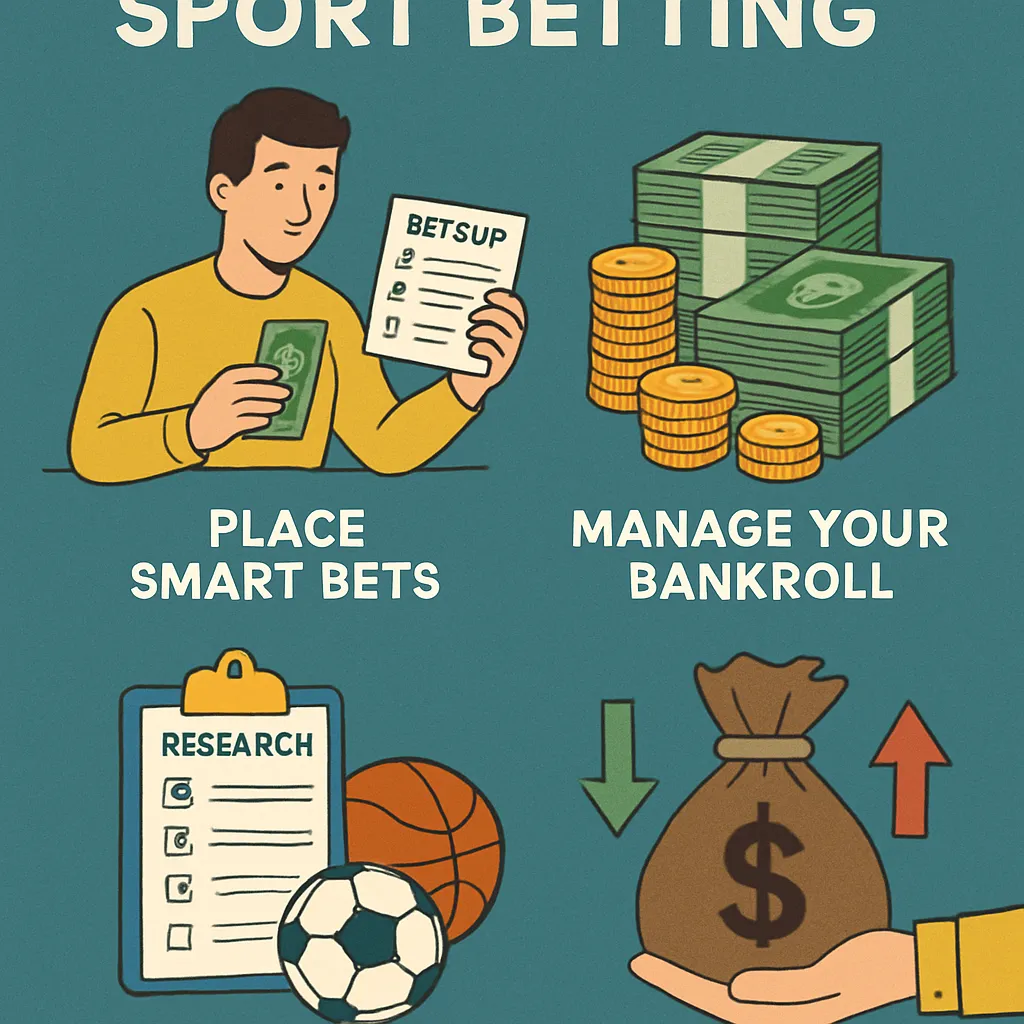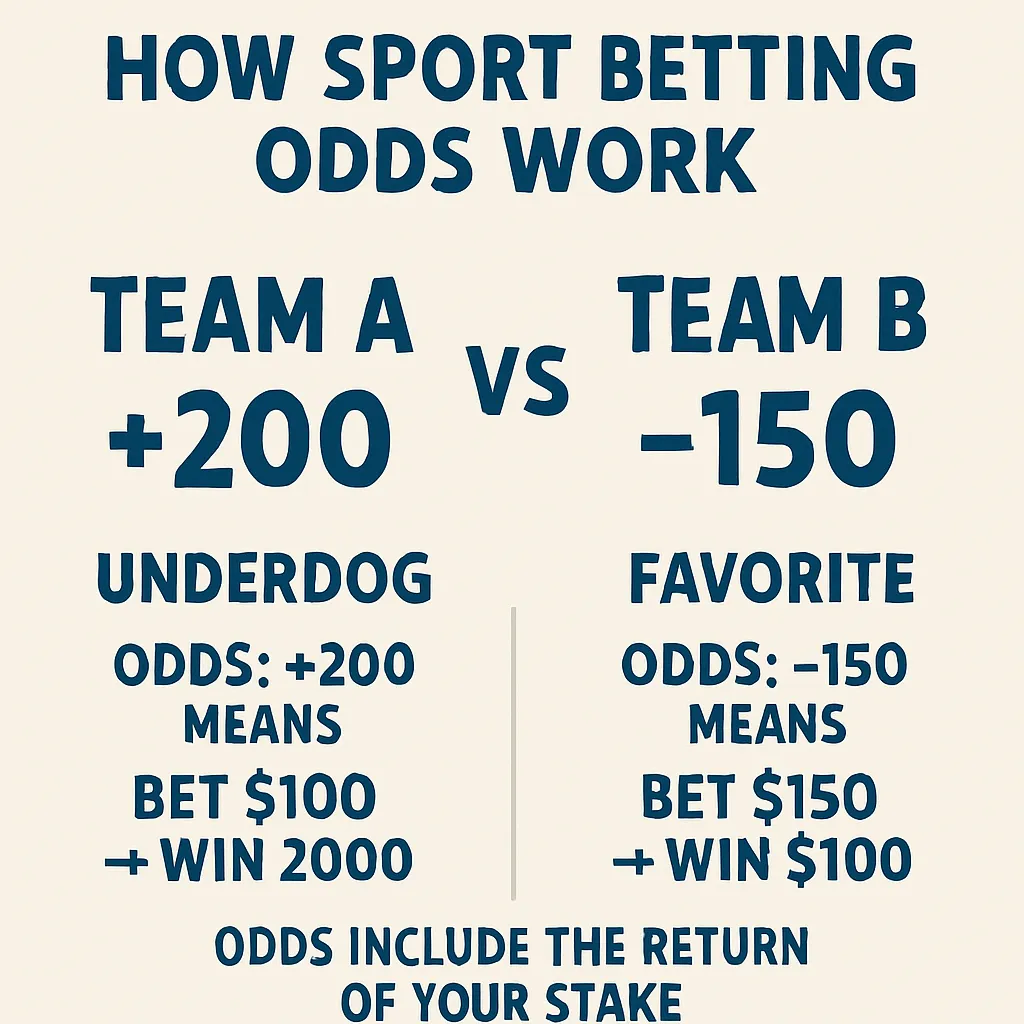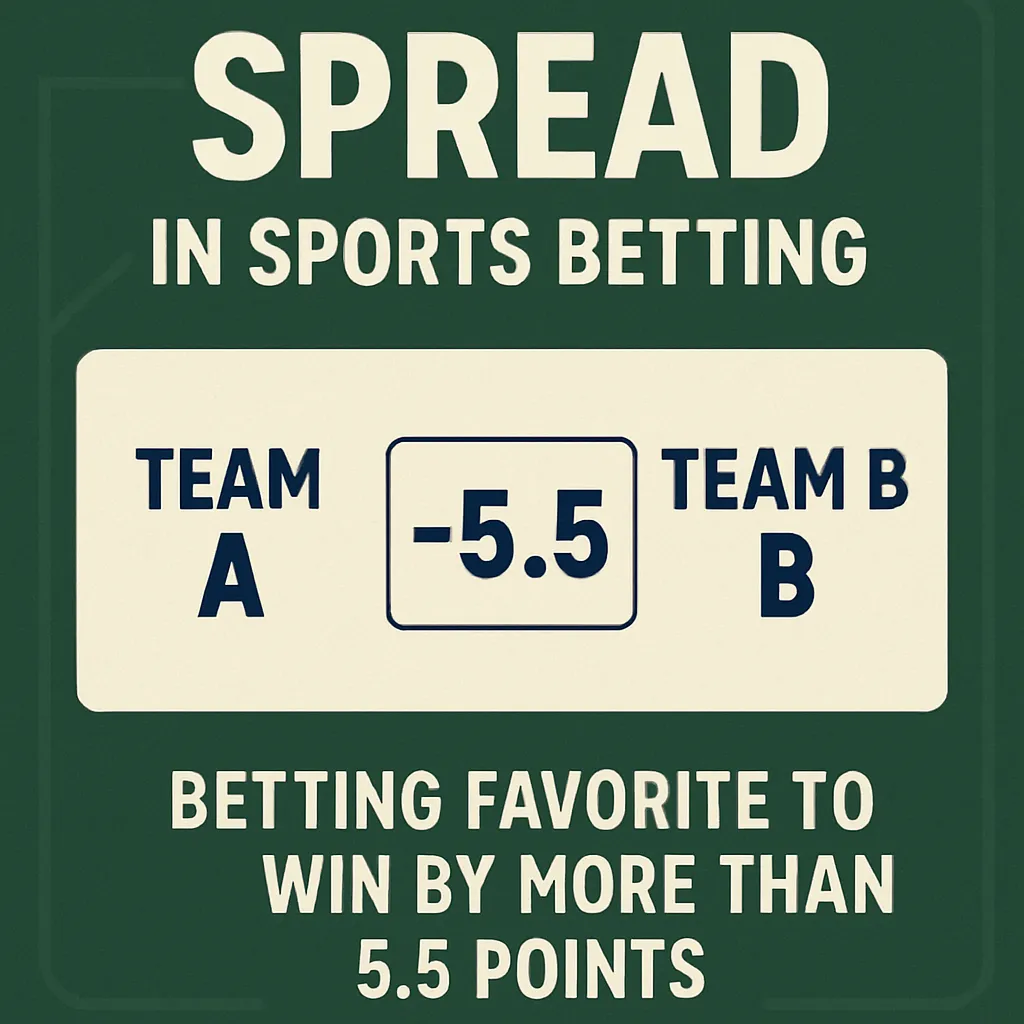Football betting offers a variety of ways for fans to engage with the game beyond just watching the action on the field. One of the simplest, yet often misunderstood, options is the moneyline bet. This article will demystify how moneyline betting works in both NFL and college football contexts. We’ll cover the fundamentals, compare it against the point spread, and explore when it makes sense to place a moneyline bet. Additionally, we’ll examine the benefits and risks, delve into advanced strategies, and answer common questions to help you become a more informed bettor. By the end, you should feel confident about placing a football moneyline and understanding the odds behind it.
What is Moneyline Betting?
Moneyline betting is the most straightforward form of sports betting, focusing solely on which team will win the game outright. Unlike point spread bets, there is no handicap or “give” involved; you simply pick the winner. Moneyline odds are expressed in American format (e.g., +150, −200) and reflect both the probability of an outcome and the payout if that outcome occurs. For favorites, a negative number indicates how much you need to wager to win \$100, while for underdogs, a positive number shows how much you win on a \$100 wager. Understanding these numbers is essential because they combine implied probability and payout potential in one glance. Football moneyline bets appeal to beginners because of their simplicity but require a solid grasp of odds to exploit value.
The Basics of a Moneyline Bet
At its core, a moneyline bet is a wager on the outright winner of a game, period. If you bet on a team with −150 odds, you must stake \$150 to win \$100; if that team wins, you receive \$250 back (your \$150 stake plus \$100 profit). Conversely, betting on a +200 underdog means a \$100 wager yields \$200 in profit, returning \$300 total. These odds shift based on factors such as team strength, injuries, weather, and betting volume. Bookmakers adjust moneyline odds to balance their books and manage risk. For sports bettors, identifying when moneyline odds are mispriced compared to true probabilities is key to long-term profitability. Always convert moneyline odds to implied probability to compare against your own estimated chances of a team winning.
Key Differences: Moneyline vs. Point Spread
While both moneyline and point spread bets aim to predict game outcomes, they operate on different principles. A point spread gives one team an advantage (e.g., +7 points) and handicaps the favorite (e.g., −7 points) to level the playing field. You win a point spread bet if your selected team covers the margin. Moneyline bets, on the other hand, ignore score differentials entirely—only the winner matters. This means favorites can have very low payouts on the moneyline, whereas point spreads often yield similar payouts on both sides (commonly −110). For risk-averse bettors, moneyline bets on underdogs can offer higher payouts but less frequent wins. Point spread betting appeals to those who believe they can outguess the margin rather than the outright winner. Understanding these differences helps you choose the best strategy for each situation.
How Moneyline Works in Football
Moneyline betting in football varies slightly between the NFL and college football due to league structures, parity, and betting markets. In professional football, analysts and oddsmakers have extensive data and power rankings to set lines. College football features more teams of varying quality, leading to greater odds disparity in mismatches. Regardless of league, moneyline bets reflect both the statistical probability of a win and the public’s betting tendencies. Weather conditions and home-field advantage can also significantly sway lines. Moreover, live or in-play moneyline markets allow bettors to adjust their wagers as a game unfolds, introducing another layer of strategy. Let’s explore each context in more detail.
Moneyline Bets in NFL
The NFL moneyline market is one of the most liquid and efficient in sports betting. With 32 teams and standardized schedules, bookmakers have ample historical data to price games accurately. Favorites in NFL moneyline bets often carry heavy juice (vig), making it expensive to back the strong side frequently. Underdogs, meanwhile, can pay out handsomely if you correctly identify potential upsets or undervalued teams. Public perception and media narratives around star quarterbacks or coaches can skew lines, creating occasional value for disciplined bettors. Additionally, situational factors—such as a team on a winning streak or returning from bye week—can influence odds. Understanding these subtleties helps you spot mispricings in the NFL moneyline market.
College Football and Moneyline Betting
College football moneyline bets differ because there are more teams (130+ in FBS alone) and greater variance in talent. Early-season games often showcase powerhouse programs versus mid-major teams, resulting in lopsided moneylines (e.g., −1000 or shorter). These extreme odds offer little value unless you’re certain a favorite will dominate by a shutout. Conference play, rivalry games, and postseason matchups typically see tighter lines and more balanced betting on both sides. Sportsbooks also factor in local fan bases when adjusting college football moneyline lines. Moreover, injuries to key players or coaching changes can cause abrupt line shifts. Bettors who follow recruiting, coaching trends, and team depth charts gain an edge in predicting moneyline outcomes in college football.
Benefits and Risks of Moneyline Betting
Moneyline betting offers several advantages, such as simplicity and the potential for large payouts on underdogs. Because you only need to choose the winner, novices find it more intuitive than point spread or totals bets. Moneyline bets also eliminate the guesswork of point margins, focusing instead on outright victory. However, there are risks: favorites often carry vig-laden odds, increasing the break-even win rate needed to profit. Losing streaks can be frustrating if you frequently back underdogs. Additionally, sharp bettors sometimes adjust lines quickly, leaving value bettors lagging. Careful bankroll management and odds analysis are crucial to mitigate these risks. Below, we’ll discuss when moneyline betting makes the most sense and the common pitfalls to avoid.
When to Use Moneyline Betting
Knowing when to use moneyline betting can dramatically improve your long-term results. Moneyline bets excel when you’re confident in a clear underdog upset or when two evenly matched teams are playing. They also work well in low-scoring games where point spreads become volatile. In playoff or rivalry contexts, where team motivation and momentum matter, moneyline bets can capture value. Live moneyline betting offers opportunities when you perceive in-game swings that oddsmakers haven’t yet priced in. Lastly, novice bettors often stick to moneylines until they understand more complex wager types. Consider these key scenarios before placing your next football moneyline bet:
- You have strong statistical or qualitative evidence that an underdog’s implied probability is undervalued.
- The matchup is projected to be low-scoring or defensive, making point spreads uncertain.
- Weather conditions favor one team, but the point spread doesn’t fully account for it.
- You’re betting live and can exploit in-game momentum shifts before lines adjust.
- The game has playoff or rivalry significance, elevating the upset potential.
Common Mistakes to Avoid
Even experienced bettors can fall into traps when wagering on the moneyline. Overestimating favorites, chasing losses, and ignoring implied probabilities are among the most frequent errors. Betting on reputation alone—such as backing a perennial powerhouse without current context—leads to value loss. Additionally, failing to account for vig means you may underestimate how often you need to win to breakeven. Overleveraging your bankroll on “sure things” can also deplete funds quickly when the unexpected happens. Discipline and process-driven decision-making are vital. Here are some mistakes you should consciously avoid:
- Ignoring the bookmaker’s juice, which raises the required win rate to be profitable.
- Backing heavy favorites without analyzing matchup-specific factors.
- Chasing losses by increasing stakes after a defeat.
- Failing to convert odds into implied probabilities for objective comparison.
- Neglecting situational factors like injuries, weather, and travel.
Advanced Moneyline Betting Strategies
Once you’ve mastered the basics, advanced moneyline betting strategies can help you extract additional value. These include line shopping across multiple sportsbooks, leveraging advanced metrics (e.g., DVOA, EPA), and exploiting market inefficiencies. Tracking line movement can reveal where sharp money is going, guiding your own wagers. Combining pre-game research with live, in-play adjustments can further tilt odds in your favor. Moreover, incorporating proper bankroll management techniques ensures you survive variance. Below, we’ll dive into methods for analyzing odds and managing your funds effectively.
Analyzing Odds and Making Informed Bets
Before placing a football moneyline bet, convert the odds into implied probabilities to identify discrepancies between your model and the bookmaker’s line. Use this implied probability formula for American odds:
• For negative odds (−X): Implied Probability = X / (X + 100)
• For positive odds (+Y): Implied Probability = 100 / (Y + 100)
Mapping these values against your own win projections helps spotlight value bets. Additionally, monitor line movement: significant shifts may indicate sharp action or breaking news. Analyze advanced metrics like yards per play, red-zone efficiency, and turnover margins for deeper insights. Finally, always compare moneyline odds across multiple sportsbooks to ensure you’re getting the best available line. Below is a conversion table illustrating common American and decimal odds alongside their implied probabilities, aiding your quick reference before betting.
| American Odds | Decimal Odds | Implied Probability |
|---|---|---|
| −150 | 1.67 | 60.0% |
| +150 | 2.50 | 40.0% |
| −200 | 1.50 | 66.7% |
| +200 | 3.00 | 33.3% |
Bankroll Management Tips
Effective bankroll management is the cornerstone of sustained betting success, regardless of your strategy. Establish a dedicated betting bankroll separate from your personal finances to prevent overspending. Determine a flat-stake percentage for each wager—commonly 1–5% of your total bankroll—to mitigate variance. Adjust bet sizes based on confidence levels; for example, use half your standard stake on lower-confidence picks. Keep a detailed log of all bets, tracking odds, stakes, outcomes, and your reasoning to refine your approach over time. Finally, resist the temptation to chase losses by increasing bet sizes; stick strictly to your staking plan to weather inevitable losing streaks.
Common Questions About Moneyline Betting
As you become more familiar with moneyline betting, questions may arise about terminology, strategy, and risk management. Understanding the nuances behind common queries can clarify your approach. Bettors often ask how moneyline compares to other bet types, how vig affects profitability, and when to switch strategies. Clarifying these points ensures you make informed decisions rather than impulsive ones. This section addresses frequently asked questions and dispels common myths about football moneyline wagering.
FAQ: Moneyline and How It Differs From Other Bets
Q: What’s the main advantage of a moneyline bet over a point spread?
A: The simplicity of picking a winner without worrying about margins makes moneyline bets easier to understand, especially for beginners.
Q: How does the bookmaker’s juice impact moneyline bets?
A: The vig raises the odds slightly in the bookmaker’s favor, requiring a higher win percentage to turn a profit compared to “true” fair odds.
Q: Can live, in-play moneyline betting offer value?
A: Yes; by reacting quickly to game developments and line shifts, you can exploit temporary mispricings before the market corrects.
Q: Should I focus on NFL or college football moneylines?
A: Both have unique dynamics—NFL lines tend to be more efficient, while college games offer bigger discrepancies in odds due to talent gaps.
Q: How often should I adjust my bankroll strategy?
A: Review your staking plan after significant variance swings or major changes in your betting performance; avoid knee-jerk adjustments.



